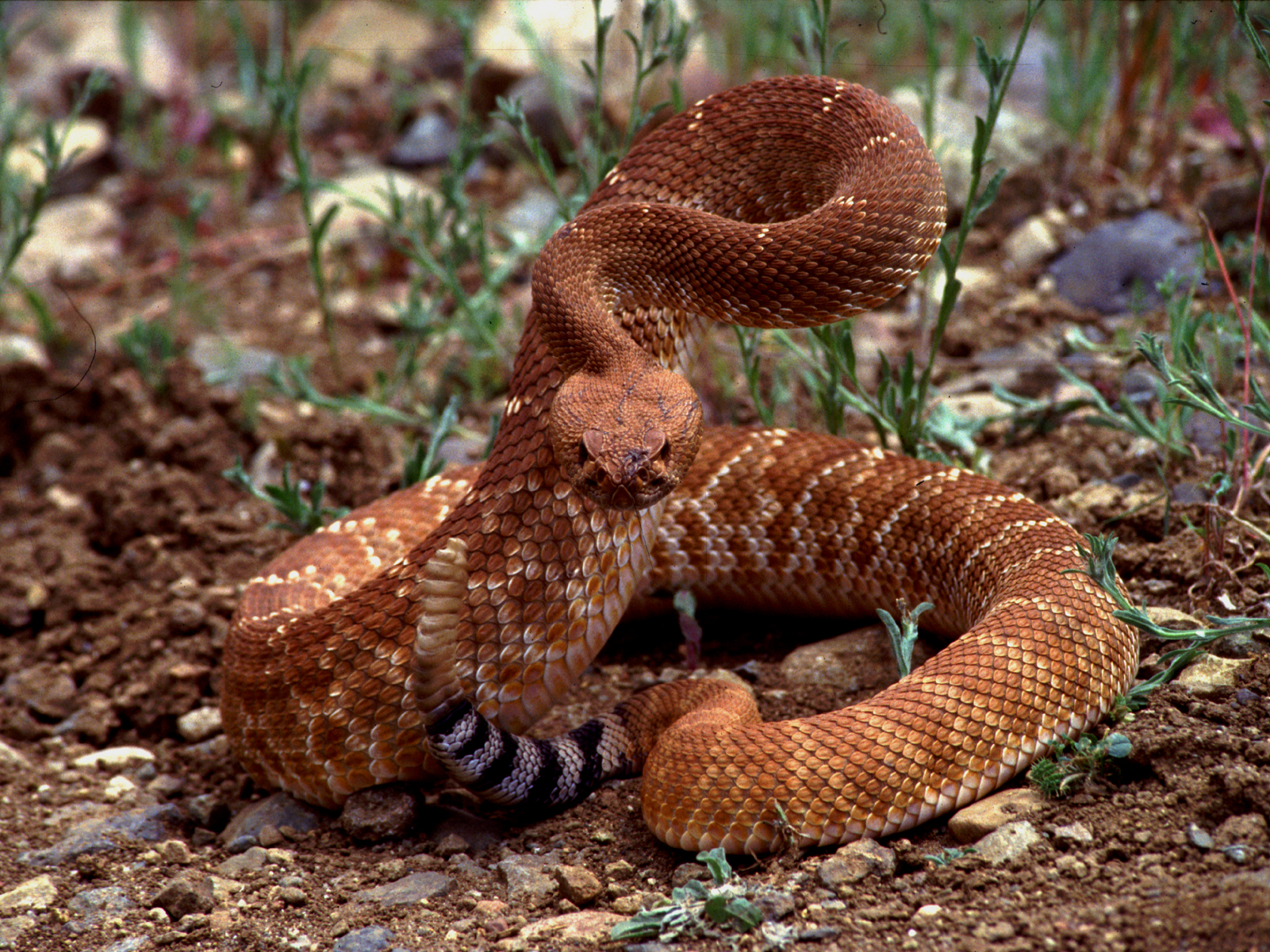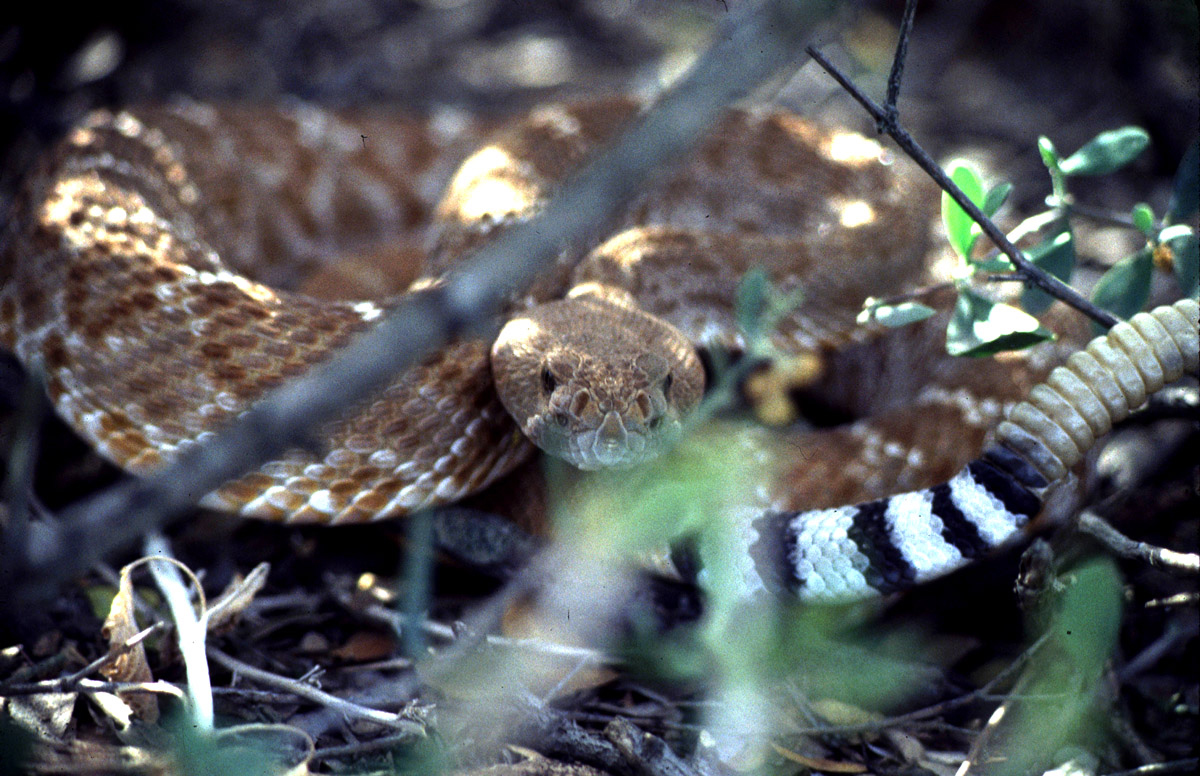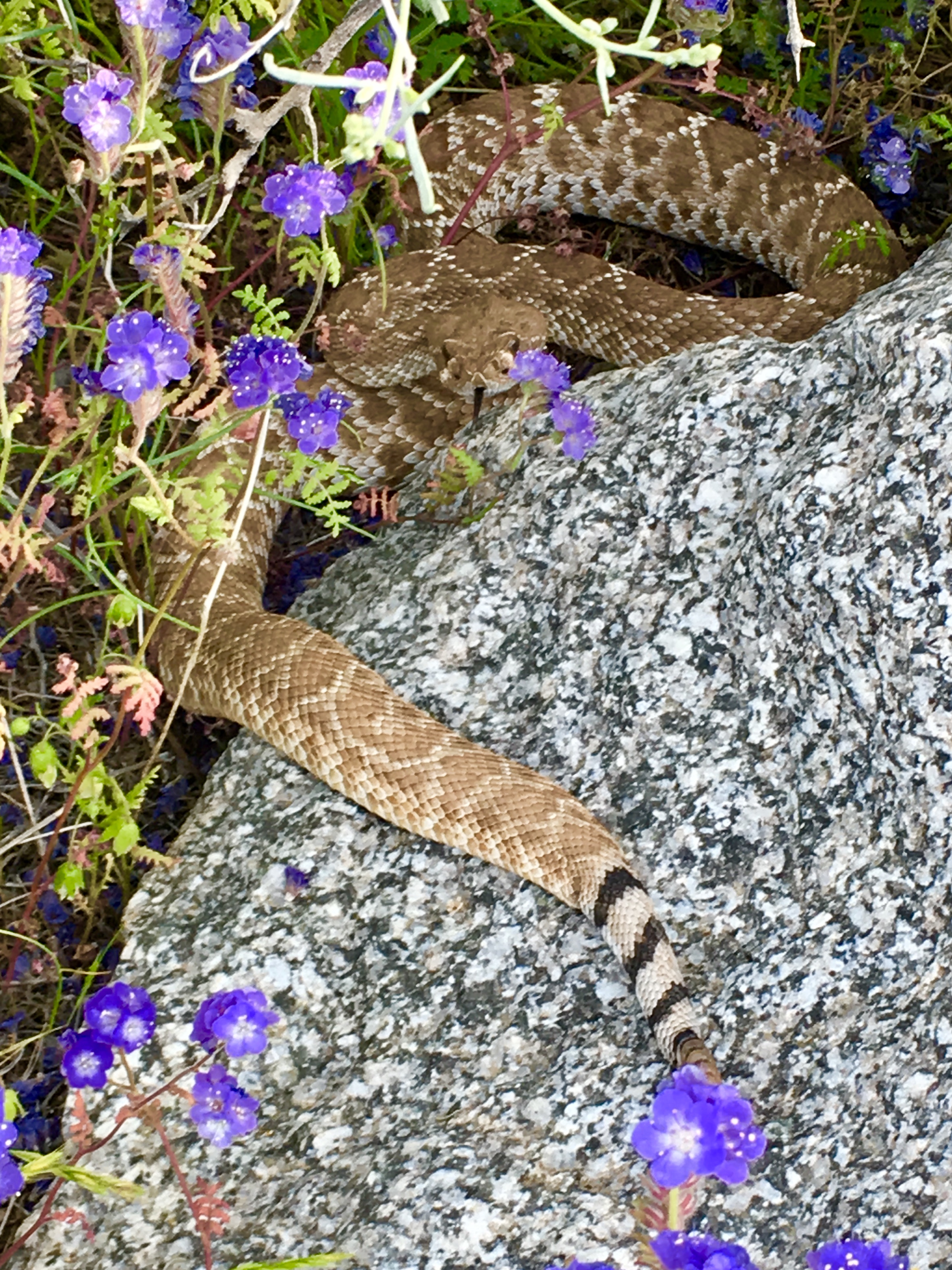Current Distribution Rangewide
Ranges from near Pioneertown and Morongo valley of San Bernadino County and southeastern Los Angeles County south through Baja California, including several islands in the Gulf of California such as Angel de la Guarda, Pond, San Marcos, Danzante, Moserrate, and San Jose islands [1;2]. Elevational range extends from near sea level to about 1500 m but usually below 1200 m [1;3].
Known Populations in San Diego County
Within Conserved Lands, occurrences have been found in MU 3 (Marron Valley Mitigation Bank, Otay Ranch Preserve, Mount Miguel Open Space, near Boulder Creek in Cleveland National Forest), MU 4 (Sycamore Canyon and Goodan Ranch), and MU 10 (Cleveland National Forest).
List Status
SSC
Habitat Affinities
Occupies habitats with heavy brush associated with large rocks or boulders [1]. Cacti are important habitat features as well as rocks [4]. Frequently observed in chamise- and red shank-dominated associations. Preference for coastal sage scrub, rocky hillsides, and desert slope scrub [3]. Occupies a wide array of habitats including desert slopes, rocky canyons, and coastal foothills [2].
Taxonomy and Genetics
Three subspecies used as pattern classes: C. r. exsul, C. r. lucasensis (San Lucan diamond), and C. r. ruber [2]. C. r. ruber forms a natural taxonomic group with C. lorenzoensis of isla San lorenzo and C. catalinensis on Isla Santa Catalina [2;5].
Seasonal Activity
Typically emerge from over-winter locations in late February [4]. Active from spring to fall, but peak activity is from March to June [1;6, cited in 7]. Generally diurnal during the spring and nocturnal during warmer months [2].
Life History/Reproduction
Courtship and copulation seen April to May [1;4;6, cited in 7]. Gestational denning in June to September, and all recorded births in September [4]. Young are live born from mid-August to October. Litters range from 5 to 13, with an average of 8 young [1;6, cited in 7]. Longevity in wild is unknown though a snake was observed to have lived over 14 years in captivity [8, cited in 3].
Diet and Foraging
Feeds on small mammals such as rabbits, ground squirrels, pocketmice, wood rats, lizards, and occasionally birds [1;6, cited in 7;9]. Capture prey by either waiting for prey or actively searching ground, rocky areas, and off the ground in bushes [7].
Dispersal
Relative restricted movement, never occurring more than 300 m linear distance from their winter dens [4].
Threats
Habitat loss due to urban and agricultural development [3;4;10] especially affecting the coastal populations in California [4;11, cited in 9].
Literature Sources
[1] Klauber, L. M. 1997. Rattlesnakes: Their Habits, Life Histories and Influence on Mankind. 2nd ed. University of California Press, Berkeley.
[2] Grismer, L. L. 2002. Amphibians and Reptiles of Baja California, including its Pacific Islands and the Islands in the Sea of Cortes.University of California Press.
[3] Jennings, M. R. and M. P. Hayes. 1994. Amphibian and Reptile Species of Sspecial Concern in California. Rancho Cordova, CA: California Department of Fish and Game, Inland Fisheries Division.
[4] Brown, T. K., J. M. Lemm, J. Montagne, J. A. Tracey, and A. C. Alberts. 2008. Spatial Ecology, Habitat Use, and Survivorship of Resident and Translocated Red Diamond Rattlesnakes (Crotalus ruber). The Biology of the Rattlesnake,377-394.
[5] Murphy, R. W. and B. Crabtree. 1985. Genetic Relationships of the Santa Catalina Island Rattleless Rattlesnake, Crotalus catalinensis (Serpentes: Viperidae). Instituto de EcologÃa.
[6] Stebbins, R. C. 1954. Â Amphibians and reptiles of western North America. New York, McGraw-Hill.
[7] Marlow, R. ND. Red Diamond Rattlesnake. S. Granholm, ed.. California's Wildlife. Vol. I-III. California Department of Fish and Game, Sacramento, California.
[8] Bowler, J. K. 1977. Longevity of Reptiles and Amphibians in North American Collections. Society for the Study of Amphibians and Reptile,Herpetological Circular No. 6.
[9] Dugan, E. A. and W. K. Hayes. 2012. Diet and Feeding Ecology of the Red Diamond Rattlesnake, Crotalus ruber (Serpentes: Viperidae). Herpetologica 68(2): 203-217.
[10] Armstrong, B. L. and J. B. Murphy. 1979. The Natural History of Mexican Rattlesnakes. Natural History Museum, University of Kansas.
[11] Halama, K. J., A. J. Malisch, T. Tennant, M. Aspell, and J. T. Rotenberry. 2008. Modeling the Landscape Niche Characteristics of the Red Diamond Rattlesnake (Crotalus ruber) Utilizing a Partitioned Mahalanobis D2 Statistic: Implications for Biology and Conservation. The Biology of Rattlesnake. Loma Linda University Press, Loma Linda, California.


